Ten Scenes of West Lake Scroll (《西湖十景图卷》)
Painted in 1750 by Dong Bangda (董邦达, 1696–1769), a Qing Dynasty court artist and literati from Fuyang, Zhejiang, this monumental handscroll (41.7 cm × 361.8 cm) was commissioned by Emperor Qianlong one year before his first southern tour to immortalize the legendary beauty of Hangzhou’s West Lake. Though titled Ten Scenes, the work meticulously labels 54 landmarks in clerical script, expanding the “tourist guide” function fivefold to entice the emperor’s anticipation. Now housed in the National Palace Museum, Taipei, it blends cartographic precision with poetic lyricism, capturing the lake’s四季 (four-season) allure through bird’s-eye vistas of mist-shrouded hills, willow-lined causeways, and pavilions steeped in literary lore.
Key Features:
- Historical Context:
- Commissioned as a “visual enticement” (招游之作), the scroll aimed to bridge Qianlong’s bookish knowledge of Jiangnan with lived experience. Its completion in 1750 directly inspired the emperor’s 1751 tour, during which he compared painted and real landscapes, later praising Dong’s work as “capturing West Lake’s essence beyond mere resemblance”.
- The scroll’s creation coincided with Qing efforts to revive Southern Song-era “Ten Scenes” aesthetics, which Kangxi had earlier codified through stelae and pavilions.
- Artistic Mastery:
- Dong, a jinshi scholar-official and co-editor of the Shiqu Baoji imperial art catalog, employed dry ink techniques (枯笔) inherited from Yuan masters like Huang Gongwang, creating subtle tonal gradations in landscapes. His fusion of literati spontaneity and courtly refinement earned comparisons to Dong Yuan and Dong Qichang, collectively dubbed the “Three Dongs” (三董).
- The scroll’s hybrid format—part topographic map, part lyrical album—reflects Dong’s dual role as a pragmatic bureaucrat and romantic poet.
- Iconic Landmarks:
- Ten Core Scenes:
- Spring Dawn at Su Causeway (苏堤春晓)
- Lotus Breeze at Crooked Courtyard (曲院风荷)
- Autumn Moon over Calm Lake (平湖秋月)
- Lingering Snow on Broken Bridge (断桥残雪)
- Fish Frolic at Flower Pond (花港观鱼)
- Evening Bell at Nanping Hill (南屏晚钟)
- Twin Peaks Piercing Clouds (双峰插云)
- Leifeng Pagoda in Sunset (雷峰夕照)
- Three Pools Mirroring the Moon (三潭印月)
- Orioles Singing in Willow Waves (柳浪闻莺)
- Expanded Vistas: Notable among the 54 sites are Zhaoging Temple, Baochu Pagoda, Yue Fei’s Shrine, and Jade Emperor Hill, revealing Dong’s ambition to document both natural wonders and cultural memory.
- Ten Core Scenes:
- Imperial Interaction:
- Qianlong’s colophon, inscribed in 1750, oscillates between scholarly humility and imperial pride:
“Long has West Lake been likened to Xi Shi’s beauty—
Yet how can a bygone legend match this living masterpiece?
I shall ride south come spring to verify its truths,
Where painted mists and real waters finally merge.” - The emperor later carried the scroll during his tour, using it as a reference to validate scenes like Su Causeway and Leifeng Pagoda, cementing its status as both art and political propaganda.
- Qianlong’s colophon, inscribed in 1750, oscillates between scholarly humility and imperial pride:
Legacy:
A pinnacle of Qing court painting, Dong’s scroll transcends mere documentation. Its interplay of ink-washed poetry and geographic rigor influenced later artists like Dong Gao (董诰), whose own Ten Scenes album resides in Zhejiang Museum. Today, digitized 3D versions allow global audiences to “stroll” its 18th-century vistas, bridging historical artistry with modern conservation.

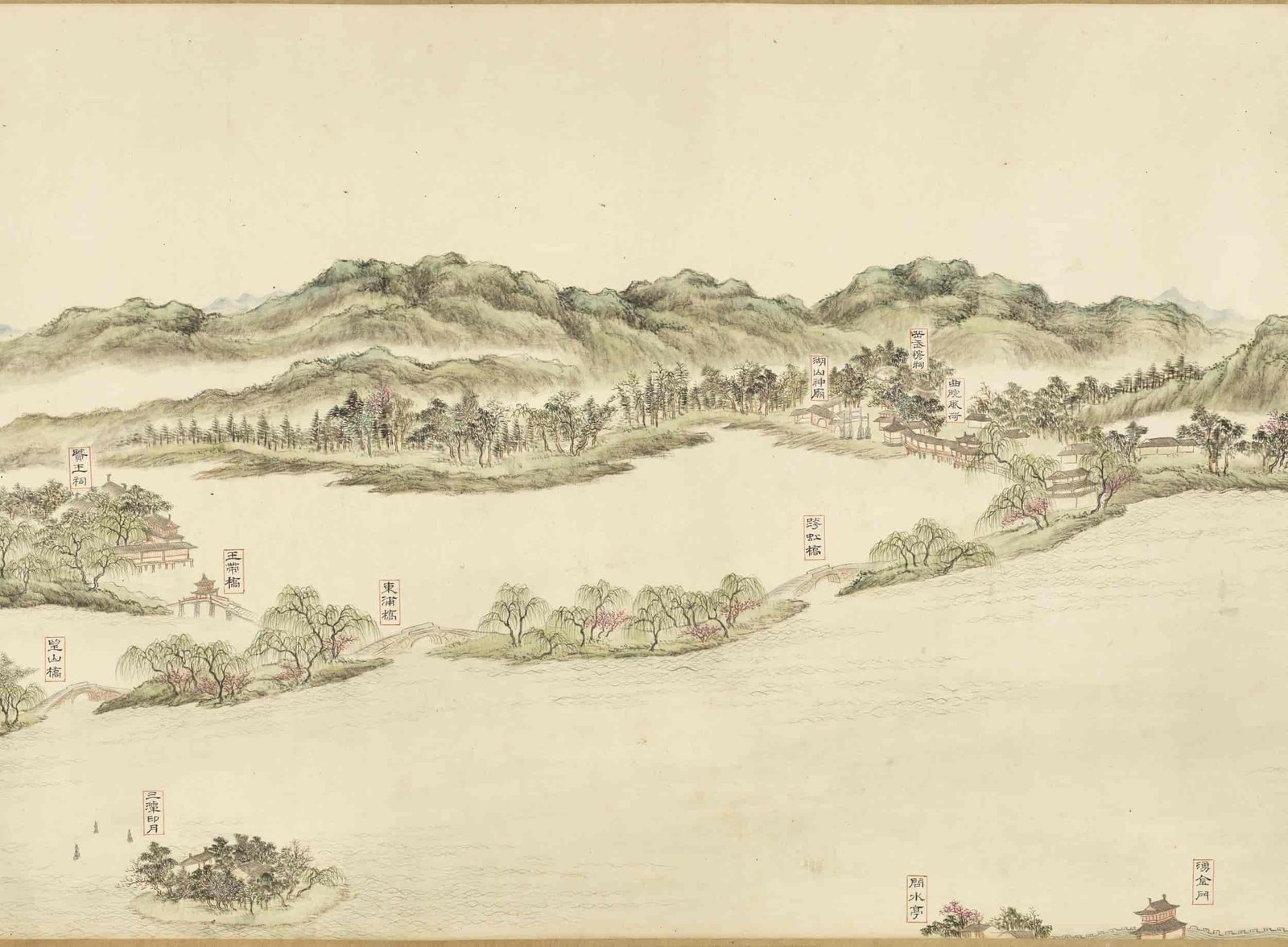
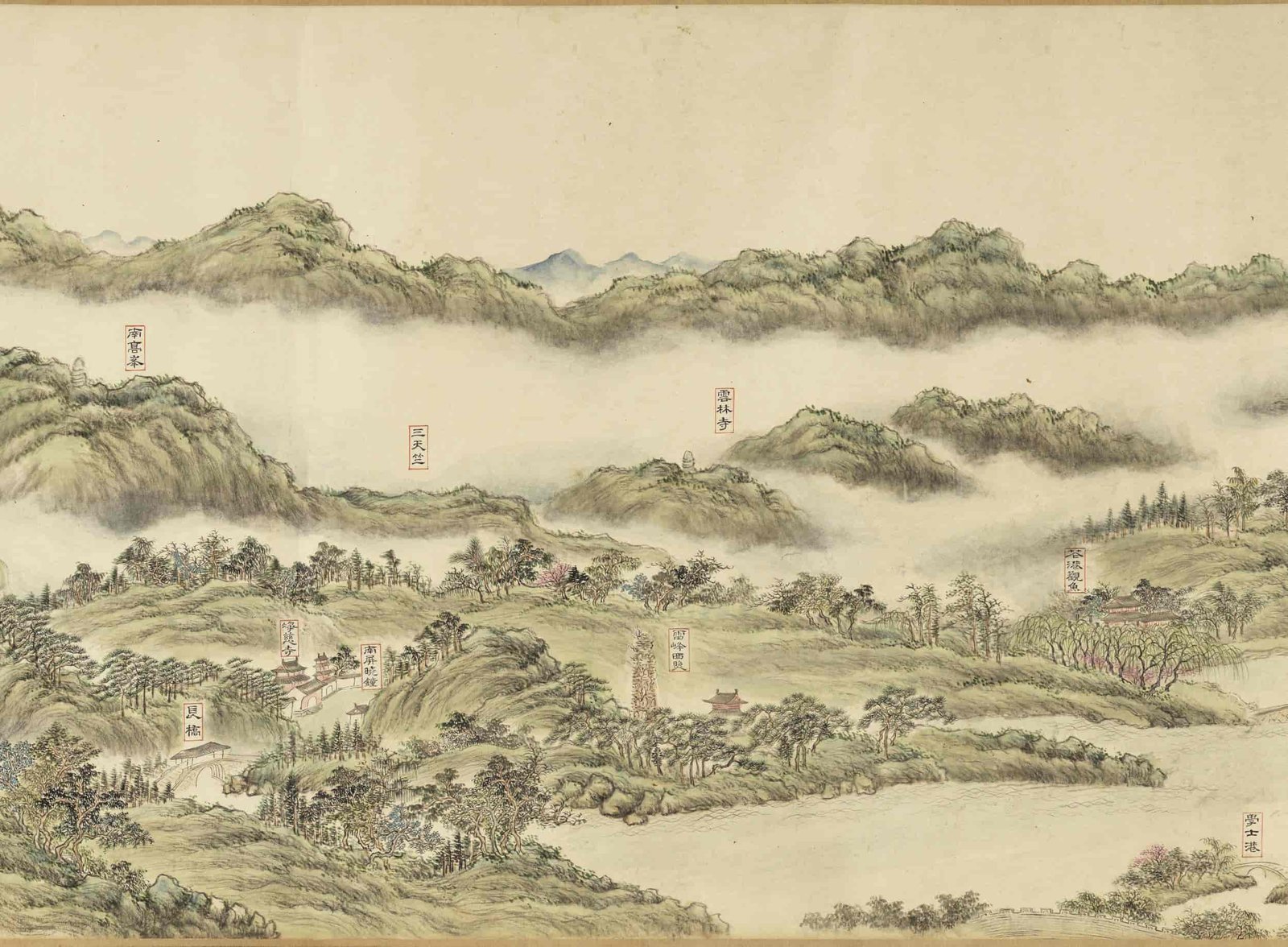
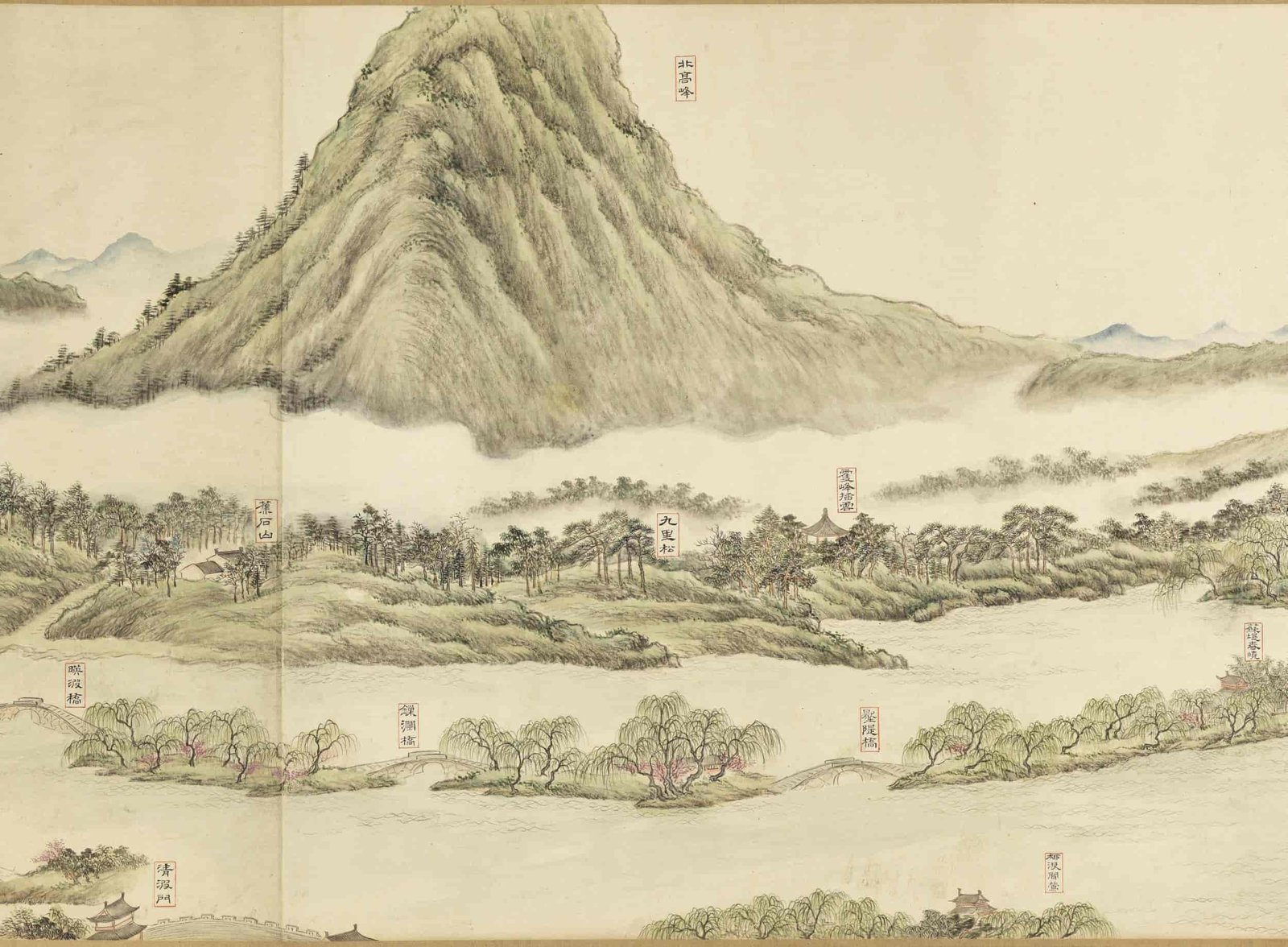
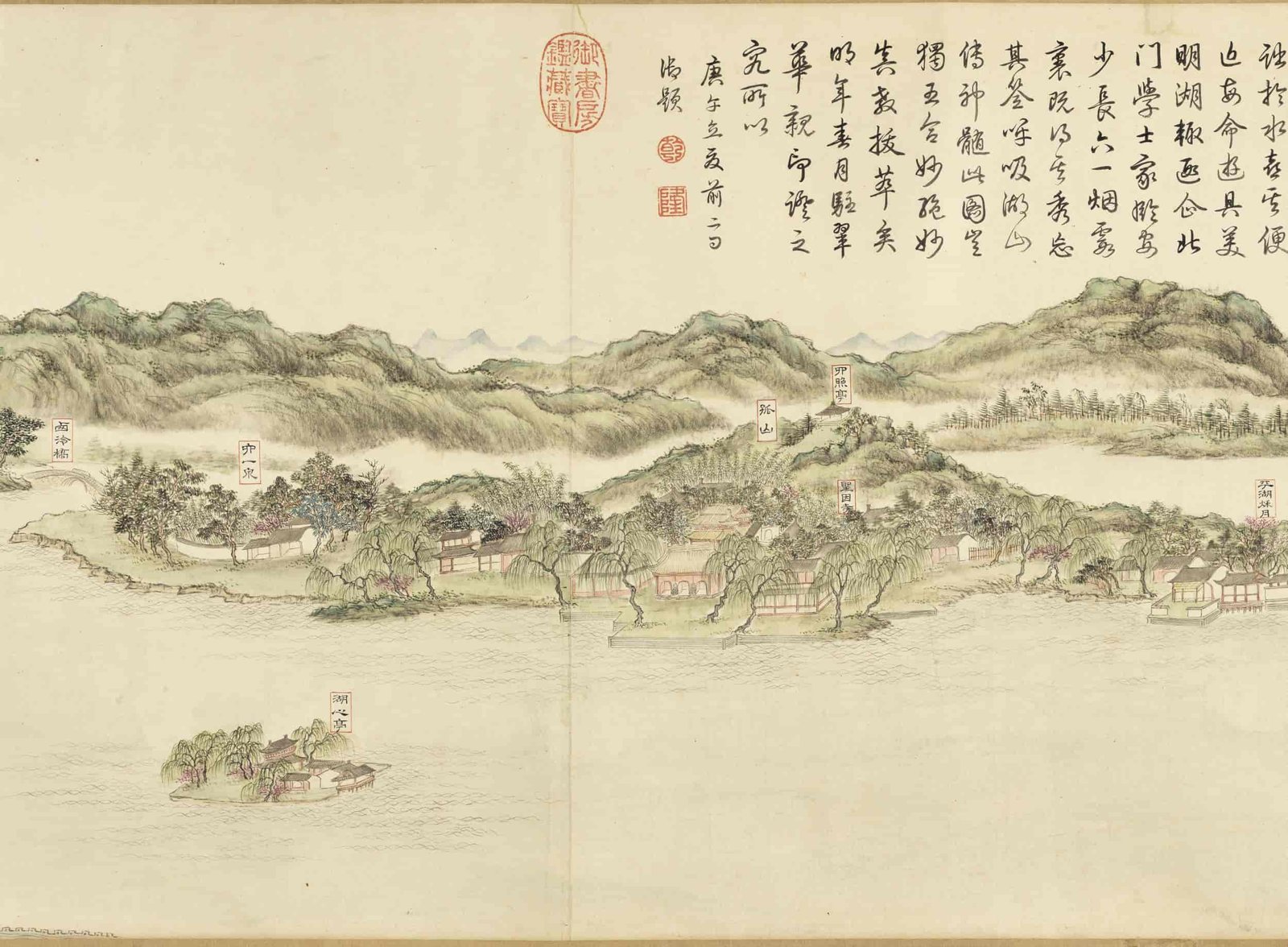
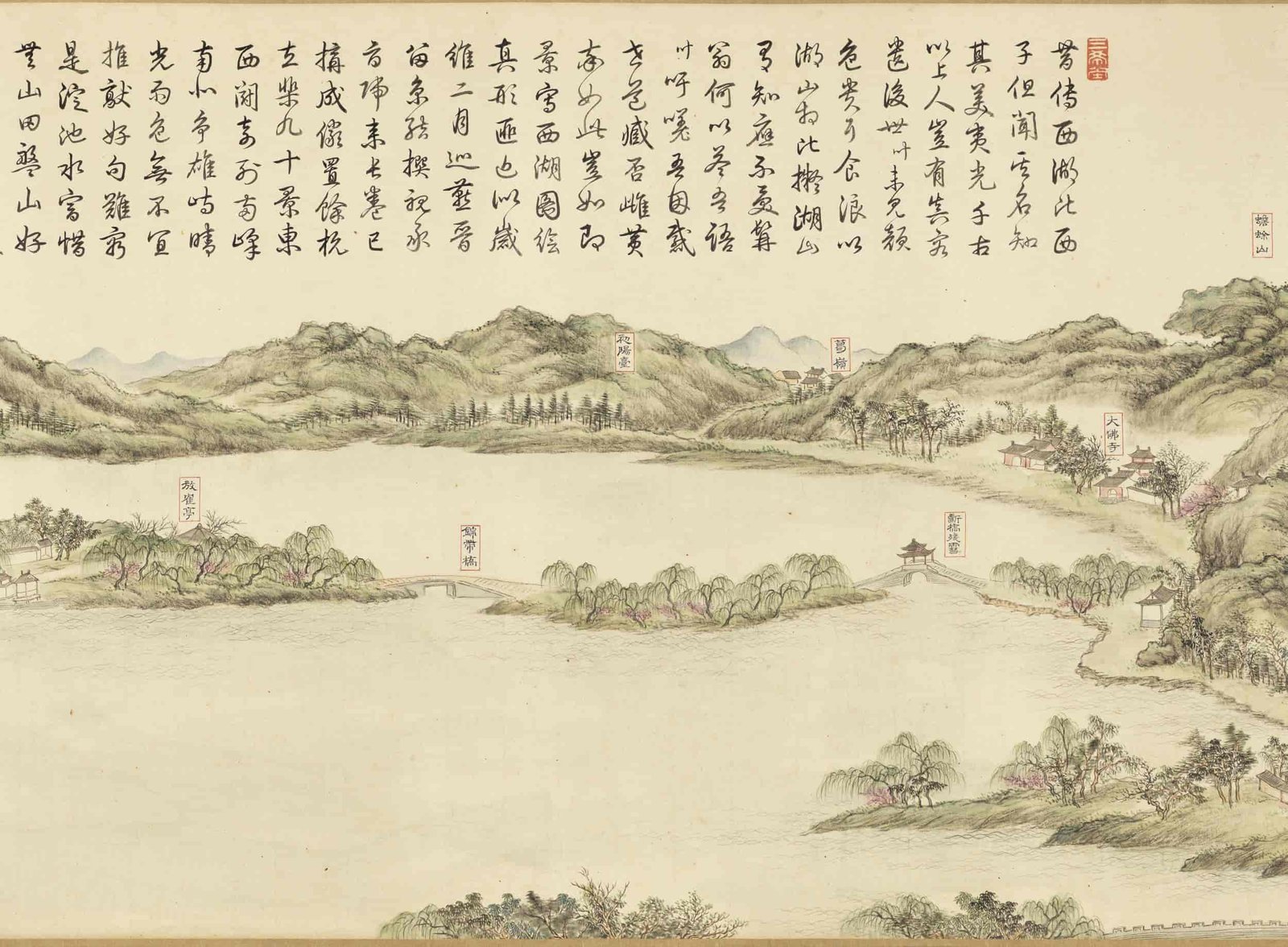
评价
目前还没有评价